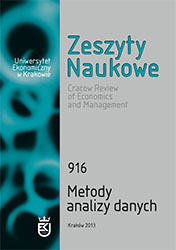Od conjoint analysis do metod wyborów opartych na menu
From Conjoint Analysis to Menu-based Choice
Author(s): Aneta RybickaSubject(s): Economy
Published by: Wydawnictwo Uniwersytetu Ekonomicznego w Krakowie
Keywords: revealed preference analysis; conjoint analysis; discrete choice method; adaptive conjoint analysis; adaptive discrete choice method; menu-based choice method
Summary/Abstract: One of most popular methods applied in stated preference evaluation is conjoint analysis. While doing preference evaluations with the application of conjoint analysis, a respondent is presented a set of profiles (products or services) to evaluate. Respondents are asked to rank or order profiles. While using discrete choice studies we don’t ask respondents to rank or order profiles, but we present a set of profiles and ask him or her to choose either one or none of them. Preference measurement and evaluation with the application of adaptive conjoint analysis is done in two phases. The respondent evaluates preferences towards levels of all attributes, then evaluates selected pairs and chooses one profile. This method allows for the use of a large number of attributes and levels. But because of the need to choose between pairs of profiles it is different from the consumer behaviour market. To get more real-life data, an adaptive discrete choice method was proposed to describe both compensatory and non-compensatory behaviours. Menu-based choice, designed for markets where a consumer can make choices from the menu, is the newest method of preference analysis. The main aim of the paper is to describe all of the methods, starting from conjoint analysis on through to menu-based choice.
Journal: Zeszyty Naukowe Uniwersytetu Ekonomicznego w Krakowie
- Issue Year: 916/2013
- Issue No: 16
- Page Range: 13-23
- Page Count: 11
- Language: Polish

